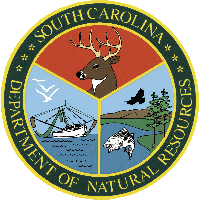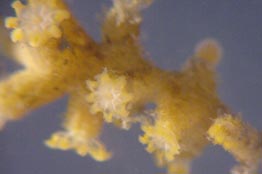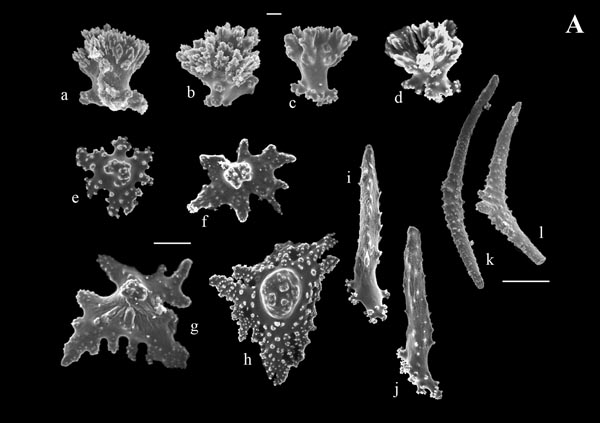CONTENTS
Introduction
The South Atlantic Bight
Methods
Octocoral Morphology
Glossary
Gorgonacean
Bauplan
see this for keys
Notes on the Species
Carijoa
riisei
Scleranthelia
rugosa
Telesto fruticulosa
Telesto nelleae
Telesto sanguinea
Bellonella rubistella
Pseudodrifa nigra
Nidalia occidentalis
Iciligorgia schrammi
Diodogorgia
nodulifera
Titanideum
frauenfeldii
Muricea pendula
Thesea nivea
Bebryce cinerea
Bebryce parastellata
Scleracis guadalupensis
Paramuricea sp.
Leptogorgia hebes
Leptogorgia punicea
Leptogorgia
cardinalis
Leptogorgia virgulata
Leptogorgia setacea
Leptogorgia euryale
Viminella
barbadensis
Renilla reniformis
Sclerobelemnon
theseus
Stylatula elegans
Virgularia presbytes
| Guide
to the Shallow Water (0-200 m) Octocorals of the South Atlantic
Bight. S. T. DeVictor
& S. L. Morton, 2007
Bebryce cinerea
Deichmann, 1936 Remarks. The examined specimen of Bebryce cinerea displays a branching, planar growth form, approximately 67 mm in height with stems reaching 2–3 mm width. The colony was yellow in life and yellow-brown when preserved in ethanol. The calyces are cylindrical and reach lengths of 2 mm with 1 mm widths and are more or less crowded along two sides of the branches in a loosely alternating manner. Most of the polyps are partly contracted, but are apparently retractile (Deichmann 1936). Atlantic distribution: South Carolina, 76 m; Gulf of Mexico, 69–274 m; Bahamas, 4–329 m; Caribbean 51–549 m; Panama, 64-128 m; Venezuela, 77–86 m (Deichmann, 1936; NMNH collections; SERTC collection).
|
|
|
|
 |




